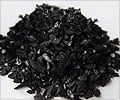Global warming continues unabated. Emissions of two greenhouse gases, methane and carbon dioxide reached record high, says World Meteorological Organization, an agency of the United Nations.
Many greenhouse gases occur naturally, such as water vapor, carbon dioxide, methane, nitrous oxide, and ozone. Others such as hydrofluorocarbons (HFCs), perfluorocarbons (PFCs), and sulfur hexafluoride (SF6) result exclusively from human industrial processes. Carbon dioxide is released into the atmosphere by the burning of solid waste, wood and wood products, and fossil fuels (oil, natural gas, and coal).Nitrous oxide emissions occur during various agricultural and industrial processes, and when solid waste or fossil fuels are burned.
Methane is emitted when organic waste decomposes, whether in landfills or in connection with livestock farming.
Methane emissions also occur during the production and transport of fossil fuels. These gases allow sunlight to enter the atmosphere freely. When sunlight strikes the Earth’s surface, some of it is reflected back towards space as infrared radiation (heat). Greenhouse gases absorb this infrared radiation, trap the heat in the atmosphere and reemit the waves downward causing the temperature of the earth to go up.
And this is called the "greenhouse effect," because of a similar effect produced by the glass panes of a greenhouse, where plants are grown under controlled conditions.
The global average concentrations of carbon dioxide, or CO2, and nitrous oxide, or N2O, in the atmosphere were higher than ever, said Geir Braathen, a climate specialist at the Geneva-based World Meteorological Organization.
Advertisement
Braathen said measurements show that CO2 is contributing more to global warming than previously.
Advertisement
The concentration of carbon dioxide in the atmosphere rose by about half a percent last year to reach 381.2 parts per million, according to the agency. Nitrous oxide totaled 320.1 parts per billion, which is a quarter percent higher than in 2005.
Braathen said it appears the upward trend will continue at least for a few years.
The World Meteorological Organization's annual Greenhouse Gas Bulletin provides widely accepted worldwide data on the amount of heat-trapping greenhouse gases in the atmosphere.
CO2, methane and N2O are the most common greenhouse gases after water vapor, according to the meteorological organization.
There is 36.1 percent more carbon dioxide in the atmosphere than there was in the late 18th century, primarily because of combustion of fossil fuels, the World Meteorological Organization bulletin said.
A report presented by a U.N. expert panel said last week that average temperatures have risen 1.3 degrees Fahrenheit in the last 100 years, and that 11 of the last 12 years have been among the warmest since 1850. Global Warming also led to a sea level increase by an average seven-hundredths of an inch per year since 1961, according to the U.N. Intergovernmental Panel on Climate Change.
The panel's report, which said human activity is largely responsible for global warming, noted that the concentration of carbon dioxide in the atmosphere is far higher than the natural range over the last 650,000 years.
The World Meteorological Organization also concluded that "Greenhouse gases are major drivers of global warming and climate change."
The World Meteorological Organization said it based its findings on readings from 44 countries.
The U.N. Intergovernmental Panel on Climate Change forecast that by 2020, 75 million to 250 million people in Africa will suffer water shortages, residents of Asia's large cities will be at great risk of river and coastal flooding, Europeans can expect extensive species loss, and North Americans will experience longer and hotter heat waves and greater competition for water.
Source-Medindia
GPL/M






